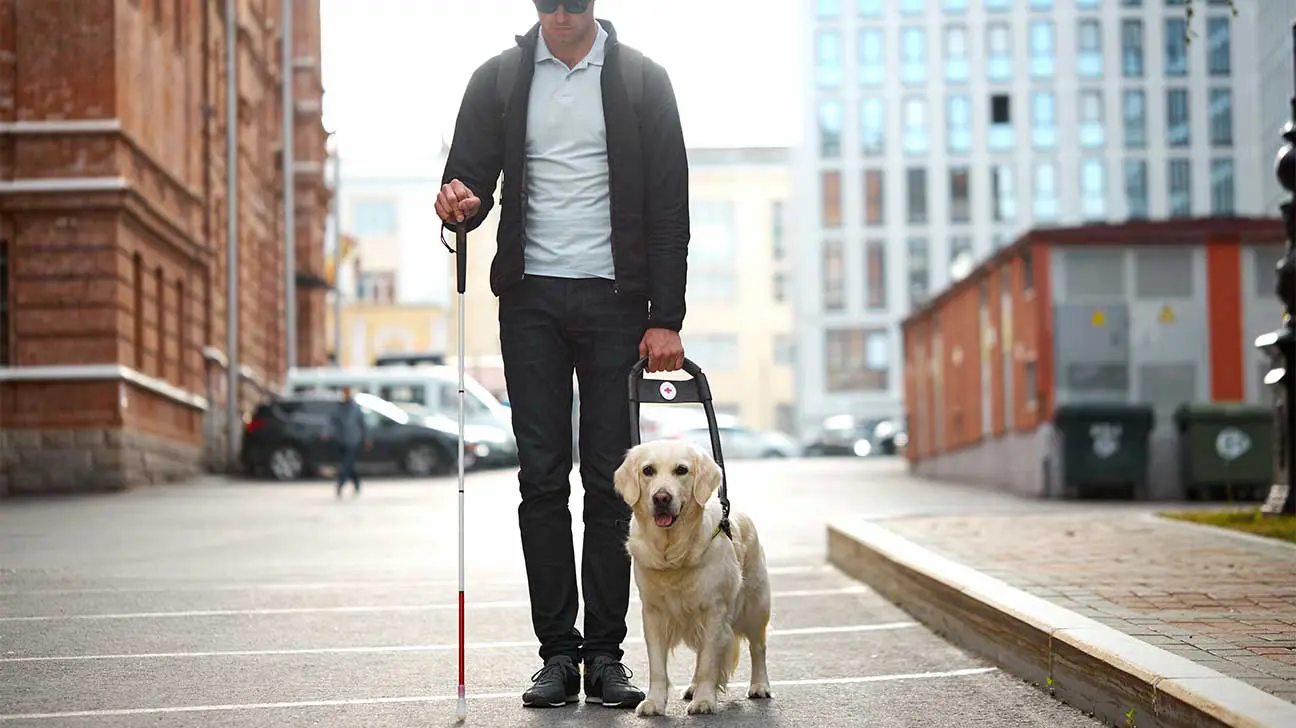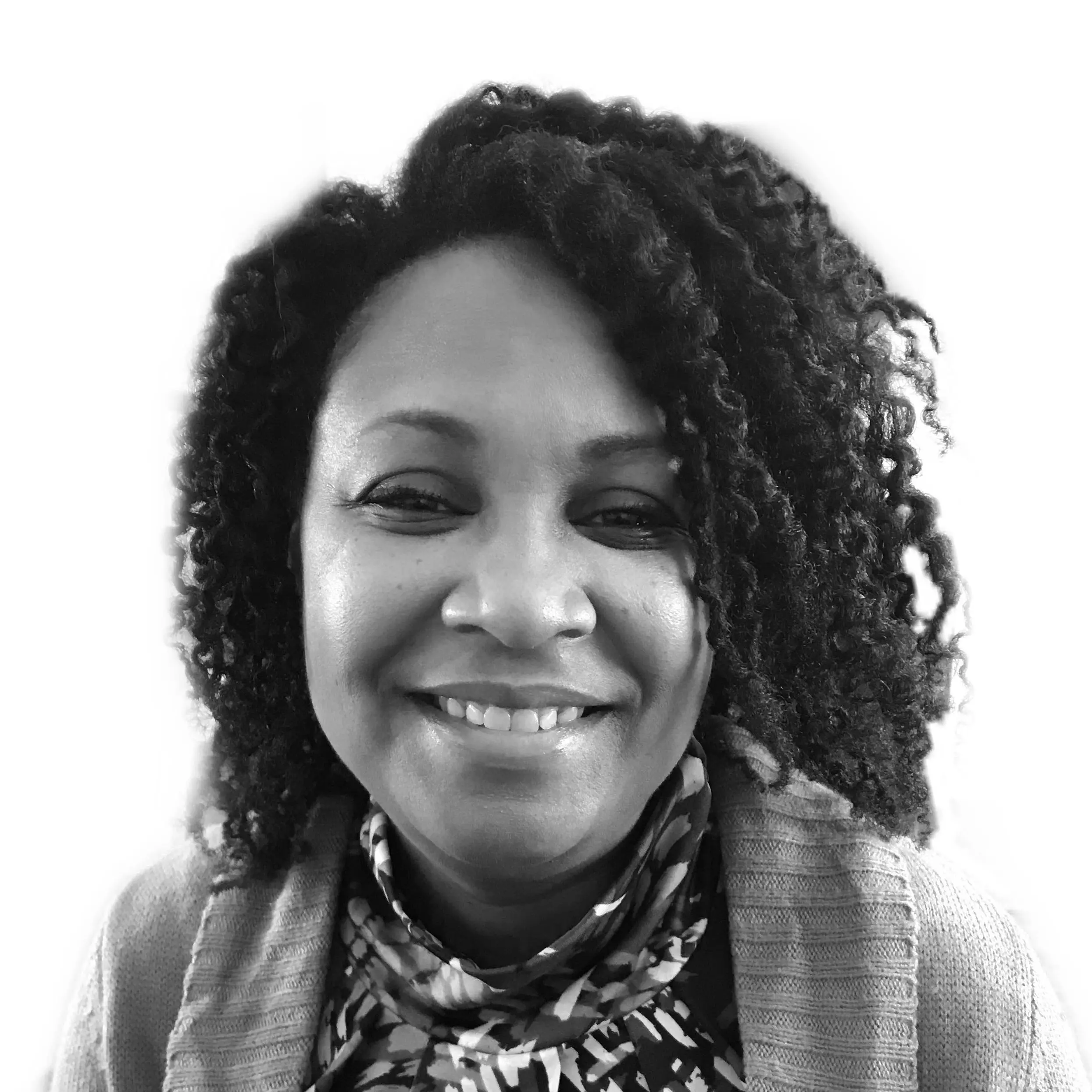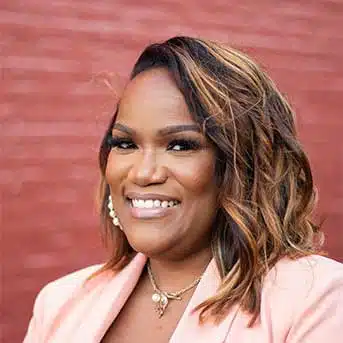
Drug and alcohol addiction affects millions of individuals and families in the United States—and no one is immune.
According to the journal Disability World, people with disabilities like blindness or other forms of visual impairment can be two to four times as likely to develop a substance use disorder.
Substance use disorders can often develop as a coping mechanism, as a way to self-medicate physical pain, emotional pain, or stress. They can also be hereditary.
People who have visual impairments may have a more difficult time finding and receiving treatment for their substance use disorder.
Understanding the unique issues people who are visually impaired face is one step towards addressing them in a way that serves the health and happiness of those affected.
Understanding Visual Impairment
Blindness is a term that can be used to describe a degree of vision loss. Vision loss more broadly occurs on a spectrum and can be caused or influenced by various factors.
Legal blindness is a type of vision loss that is legally defined in order to determine eligibility for disability benefits. In the U.S. this is central visual acuity of less than 20/200 in one eye.
Total blindness describes a complete loss of vision. People with total blindness are unable to see at all.
Low vision is a term used to describe having some vision, but having difficulty completing tasks as a result of the degree of impairment. This difficulty can persist even with corrective lenses.
Vision loss is a broad term that can describe people who have trouble seeing, even with glasses or contact lenses, as well as people who are unable to see at all.
Visual impairment and blindness can occur from birth or can develop as a result of injury, illness, a genetic condition, or macular degeneration.
Understanding Substance Abuse And Addiction
Substance abuse, or substance misuse, describes a pattern of compulsive and uncontrollable drug or alcohol use that is harmful to a person’s health, wellbeing, and general way of life.
Examples of substance misuse include:
- taking prescription drugs in ways other than prescribed
- taking them for reasons other than prescribed
- taking pills from someone else’s prescription
- using illicit drugs (e.g. heroin, cocaine, methamphetamine)
- frequent and heavy drinking
taking non-prescribed drugs despite negative consequences on physical health, mental health, or general wellbeing
People who misuse alcohol or other drugs may develop physical dependence. This can develop through chronic use of a drug, or through substance misuse.
Addiction is a chronic, but treatable condition in which a person feels physically or psychologically unable to control or stop using an addictive substance.
How Common Is Addiction Among People Who Are Blind?
According to the American Federation for the Blind, an estimated 32.2 million adults in the United States have some degree of vision loss. About one million are blind.
Some research suggests that anywhere from 20 to 50 percent of people with visual impairment have substance use problems. Due to a lack of research, the cause of this high rate is unclear.
What’s The Connection Between Substance Abuse And Visual Impairment?
Substance abuse and addiction are complicated conditions that can be influenced by a wide range of factors, including various social, health-related, and economic conditions.
While this is certainly true for general populations, people who are visually impaired may have unique risk factors that can put them at higher risk for developing a drug or drinking problem.
What can put people with visual impairment at greater risk:
- experiencing discrimination
- stigma of visual impairment and addiction
- high levels of stress
- loneliness
- lack of positive social support
- higher rates of co-occurring mental illness
- reduced access to adequate healthcare
- feeling stifled by family members or caregivers
- having loved ones who enable their substance use
Experiencing discrimination or other forms of trauma—which is higher in the disability community—has a significant link to heavy drinking and drug misuse.
Furthermore, lacking social support or adequate access to behavioral healthcare services can also disconnect a person who is visually impaired from the kind of help they might need.
Can Substance Use Disorders Cause Blindness?
Chronic drug or alcohol abuse can have effects on vision, including blurry vision, rapid eye movements, sensitivity to light, and vision loss.
Substances associated with ocular conditions include:
- alcohol
- cocaine
- heroin
- methamphetamine
- tobacco
People who struggle with chronic addiction may experience temporary or permanent changes in vision, depending on the type of drug used, for how long, and other personal risk factors.
Furthermore, people who misuse drugs or alcohol can also be at higher risk for suffering injury, falls, and other accidents that can cause trauma to the eyes.
What Are The Signs Of Drug Or Alcohol Abuse?
The signs of a substance use disorder can vary based on the type of drug misuse, age, and other personal factors. Not every struggle looks the same.
Common signs of drug or alcohol abuse include:
- drinking/using drugs very often and in excess
- taking drugs without a prescription
- mood swings
- lying about how much they’re drinking or using drugs
- feeling reliant on drugs or alcohol to get through the day
- withdrawing from others socially
- acting hostile, angry, or defensive when asked about their substance use
- unexplainable changes in physical appearance
- being unable to cut down on or control one’s substance use
Some people with substance use issues will deny having a problem. This can be because they genuinely don’t believe they have a problem, or because they’re unwilling to get help.
Addiction is highly stigmatized. When talking to someone who’s misusing drugs or alcohol, be compassionate and emphasize that you’re coming from a place of love and a desire to help.
Common Barriers To Treatment For People Who Are Visually Impaired
Although treatment centers are legally obligated to provide accessible treatment services, this isn’t always seen in practice.
According to the Substance Abuse and Mental Health Services Administration (SAMHSA), studies suggest that many addiction treatment facilities aren’t fully accessible for people with sensory disabilities.
Common barriers to addiction treatment include:
- lack of staff training
- inaccessible treatment methods
- lacking nearby treatment options
- cost of treatment programs
- lack of transportation
- architectural barriers
Perhaps the most crucial barrier that affects people who are visually impaired is finding a treatment center or provider that is attentive and able to accommodate their needs.
Some vocational rehabilitation (VR) counselors can also have negative attitudes and bias towards people with substance use disorders. This can affect whether a person is referred to specialized addiction treatment.
Making Substance Abuse Treatment More Accessible
Under the American Disabilities Act (ADA), people with physical disabilities—including visual disabilities—are entitled to medical and behavioral health treatment that is accessible.
Even so, many rehab centers are not staffed with addiction professionals who specialize in treating people who are visually impaired. This can make finding treatment difficult.
Considerations for making addiction treatment more accessible:
- adapting treatment reading materials to non-visual formats
- providing literature in Braille format
- allowing guide dogs on the treatment campus
- adapting components of therapy to be non-visual
- explaining treatment services (including information about medications) out loud rather than by providing print
- hosting trainings for staff led by organizations that advocate for people with visual impairment
- addressing any existing architectural barriers that affect the ability of visually impaired populations to navigate a treatment center
When searching for a treatment program for someone who is visually impaired, it may be necessary to inquire about available accommodations to ensure your or your loved one’s needs can be adequately met.
Addiction Treatment For People Who Are Blind
Addiction recovery will often require treatment at multiple levels of care. This applies to everyone, regardless of their visual functioning.
Treatment for substance abuse and addiction can be more or less intensive, depending on the severity of the disorder and other needs.
Treatment programs for substance use disorders include:
- detoxification programs (detox)
- inpatient rehabilitation
- residential rehabilitation
- partial hospitalization programs (PHP)
- intensive outpatient programs (IOP)
- general outpatient programs
- medication-assisted treatment
- outpatient counseling
Finding an inpatient treatment program is generally recommended for people with severe or chronic addiction. This can offer 24-hour support and supervision within a rehab facility.
Resources For Visual Impairment And Addiction
Getting help for addiction while living with visual impairment, or loving someone who is visually impaired and struggling with addiction, can be a stressful process.
General resources for addiction treatment and visual impairment:
- Substance Abuse and Mental Health Services Administration: Find Treatment
- Alcoholics Anonymous (AA): Online Intergroup
- American Foundation for the Blind: Disability Laws & Rights
- Blindness Support: Essential IOS Apps
- Vision Aware: Support Groups and Other Resources
- Library of Congress: National Library Service for the Blind and Print Disabled
Here is a list of organizations and programs that offer educational guides, advocacy resources, and information on how to help yourself or a loved one with visual impairment and a substance use disorder.
American Foundation For The Blind
The American Foundation for the Blind is one of the nation’s leading advocacy organizations for people who are visually impaired or blind.
Helpful resources include:
- Resources for Adults New to Vision Loss
- Family Connect
- Disability Rights Resources for People with Vision Loss
This organization offers information on vision loss and disability rights, advocacy tools for those affected by vision loss, and conducts research through their public policy and research institute.
My Blind Spot
My Blind Spot is a leading advocacy organization dedicated towards inspiring accessibility for all. They provide outreach, education, advocacy, and consulting services for organizations.
National Federation of the Blind
The National Federation of the Blind is the oldest and largest organization led by blind people in the United States. They focus on advocacy, education, and providing accessibility resources.
Helpful resources include:
- Safety & Support
- Braille Resources
- DeafBlind Resources
- Guide Dog Resources
- Free White Cane Program
- Blind Parent Mentoring
Wright State University—Substance Abuse Resources & Disability Issues
The Substance Abuse Resources & Disability Issues (SARDI) program at Wright State University’s Boonshoft School of Medicine offers a wide range of helpful resources.
You can find educational resources for substance abuse treatment professionals, VR counselors, and individuals and loved ones of those with these co-occurring issues on their Materials page.
U.S. Department of Veterans Affairs
At least 13,000 veterans in the United States are blind, and more than one million have some form of vision loss.
Substance abuse is very common among veterans, particularly those with co-occurring health issues.
The U.S. Department of Veterans Affairs offers a wide range of educational resources and health services for veterans and their families with physical and mental disabilities.
Support For Family And Friends Of People Living With Addiction
It’s not easy to watch a loved one struggle with substance misuse, or to get help for someone who feels lost or doesn’t want to help themselves.
Taking care of yourself is supportive to your own health and that of others around you. Asking for help and accepting it is a sign of strength, not weakness.
Supportive resources for family and friends of those with addiction:
- Mental Health America: For Families And Friends
- Mental Health America: I’m Looking for Mental Health Help for Someone Else
- Substance Abuse and Mental Health Services Administration: Stories of Hope and Recovery: A Video Guide for Suicide Attempt Survivors
- Substance Abuse and Mental Health Services Administration: Alcohol and Drug Addiction Happens in the Best of Families
- Cleveland Clinic: Caregiver Burnout
- National Alliance on Mental Illness: Family Support Group
Moving forward beyond addiction is possible.
To find accessible support services and treatment options for a loved one living with addiction, you can call our helpline today for more information.
Addiction Resource aims to provide only the most current, accurate information in regards to addiction and addiction treatment, which means we only reference the most credible sources available.
These include peer-reviewed journals, government entities and academic institutions, and leaders in addiction healthcare and advocacy. Learn more about how we safeguard our content by viewing our editorial policy.
- Alcoholics Anonymous (AA)—Making Alcoholics Anonymous Accessible to Those With Special Needs
https://www.aa.org/assets/en_US/f-13_fall06.pdf - American Foundation for the Blind (AFB)—Key Definitions of Statistical Terms
https://www.afb.org/research-and-initiatives/statistics/key-definitions-statistical-terms - Centers for Disease Control and Prevention (CDC)—Fast Facts of Common Eye Disorders
https://www.cdc.gov/visionhealth/basics/ced/fastfacts.htm - Christopher & Diana Reeve Foundation: Paralysis Resource Center—Substance Abuse and Disability
http://s3.amazonaws.com/reeve-assets-production/Substance-Abuse-and-Disability-3-16.pdf - Disabled World—Addiction and Substance Abuse Among Persons with Disabilities
https://www.disabled-world.com/medical/pharmaceutical/addiction/serious.php - Journal of Visual Impairment & Blindness—Correlates of Substance Dependence among People with Visual Impairments
https://journals.sagepub.com/doi/abs/10.1177/0145482X1410800507 - Substance Abuse and Mental Health Services Administration (SAMHSA)—Substance Use Disorders in People With Physical and Sensory Disabilities
http://store.samhsa.gov/product/Substance-Use-Disorders-in-People-with-Physical-and-Sensory-Disabilities/SMA11-4648 - U.S. National Library of Medicine—Ocular manifestations of drug and alcohol abuse
https://www.ncbi.nlm.nih.gov/pmc/articles/PMC4545665/ - U.S. National Library of Medicine: NCBI Bookshelf—Substance Use Disorder Treatment For People With Physical and Cognitive Disabilities
https://www.ncbi.nlm.nih.gov/books/NBK64881/


